New Delhi-based artist Gigi Scaria investigates the notion of time and social mapping addressing his interest to community-based phenomena, stratification and change.
Missouri’s Laumeier Sculpture Park is holding Indian artist Gigi Scaria’s major solo exhibition “Time” until 14 August 2016, exploring the intertwined issues of time and mega-cities formation.
The exhibition Time suggests that temporalities are different in different parts of the world, and that a finely nuanced calibration of time is an essential requirement for understanding a fractured world. This observation from Chaitanya Sambrani’s catalogue essay quite aptly summarizes Gigi Scaria’s solo exhibition Time on view at the Laumeier Sculpture Park, Missouri from April 16 until August 14, 2015.
Scaria’s exhibition follows that of RAQS Media Collective’s as part of Laumeier’s New Territories: BRICS Curatorial Program, that serves a two-pronged focus: firstly, working with artists from erstwhile developing economies that are now powerful global players and secondly, helping to diversify the Sculpture Park’s collection.
Furthermore, the completion of the Aronson Fine Arts Center in time for Scaria’s show allowed for a cohesive curated exhibit including four photographs, three films, a large indoor sculpture and a new outdoor commission. In doing so, Laumeier has also expanded on its own role as a Sculpture Park and will be looking to play off the inside/outside spatial duality more so in the future.
Scaria’s exhibition follows that of RAQS Media Collective’s as part of Laumeier’s New Territories: BRICS Curatorial Program, that serves a two-pronged focus: firstly, working with artists from erstwhile developing economies that are now powerful global players and secondly, helping to diversify the Sculpture Park’s collection.
Furthermore, the completion of the Aronson Fine Arts Center in time for Scaria’s show allowed for a cohesive curated exhibit including four photographs, three films, a large indoor sculpture and a new outdoor commission. In doing so, Laumeier has also expanded on its own role as a Sculpture Park and will be looking to play off the inside/outside spatial duality more so in the future.
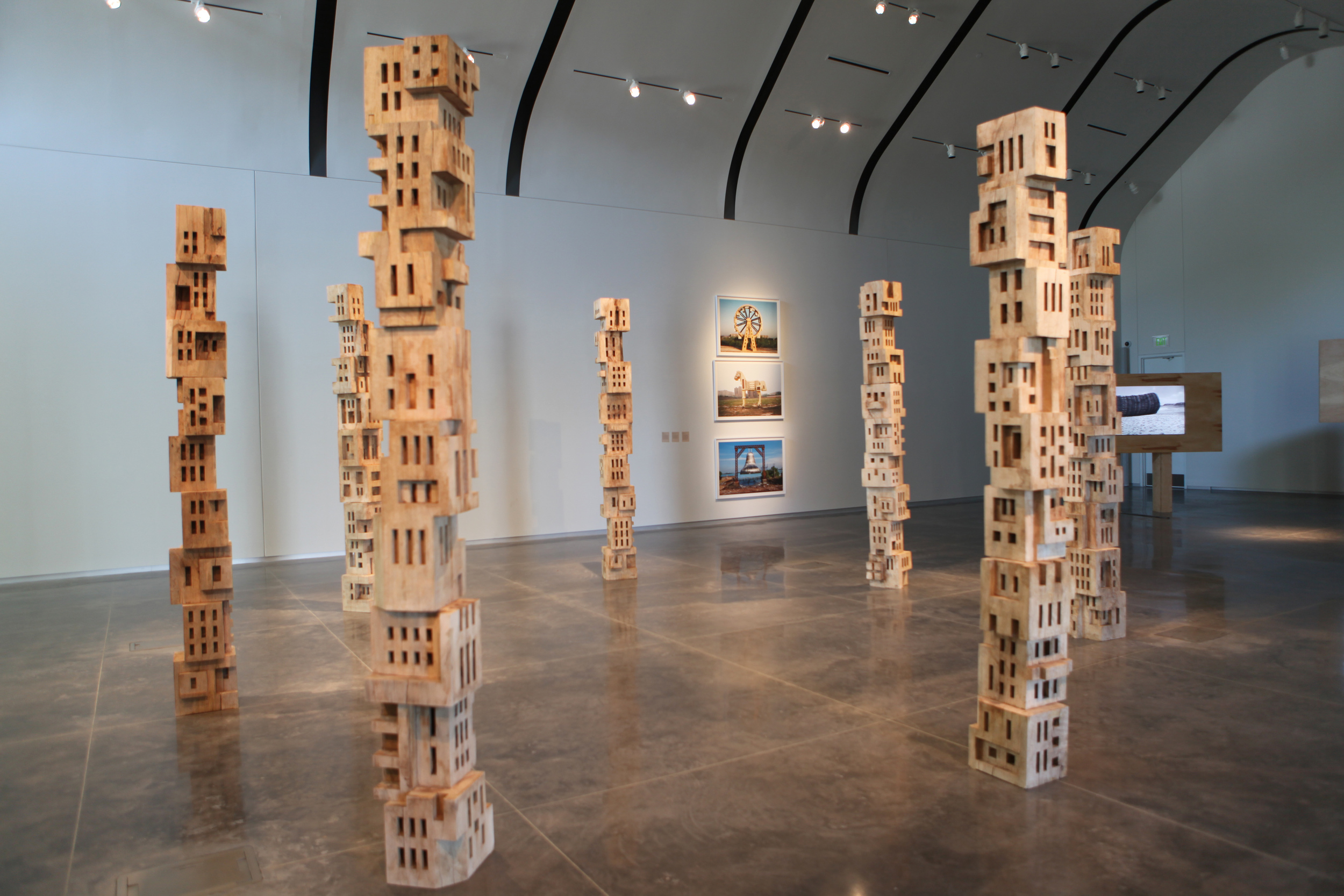
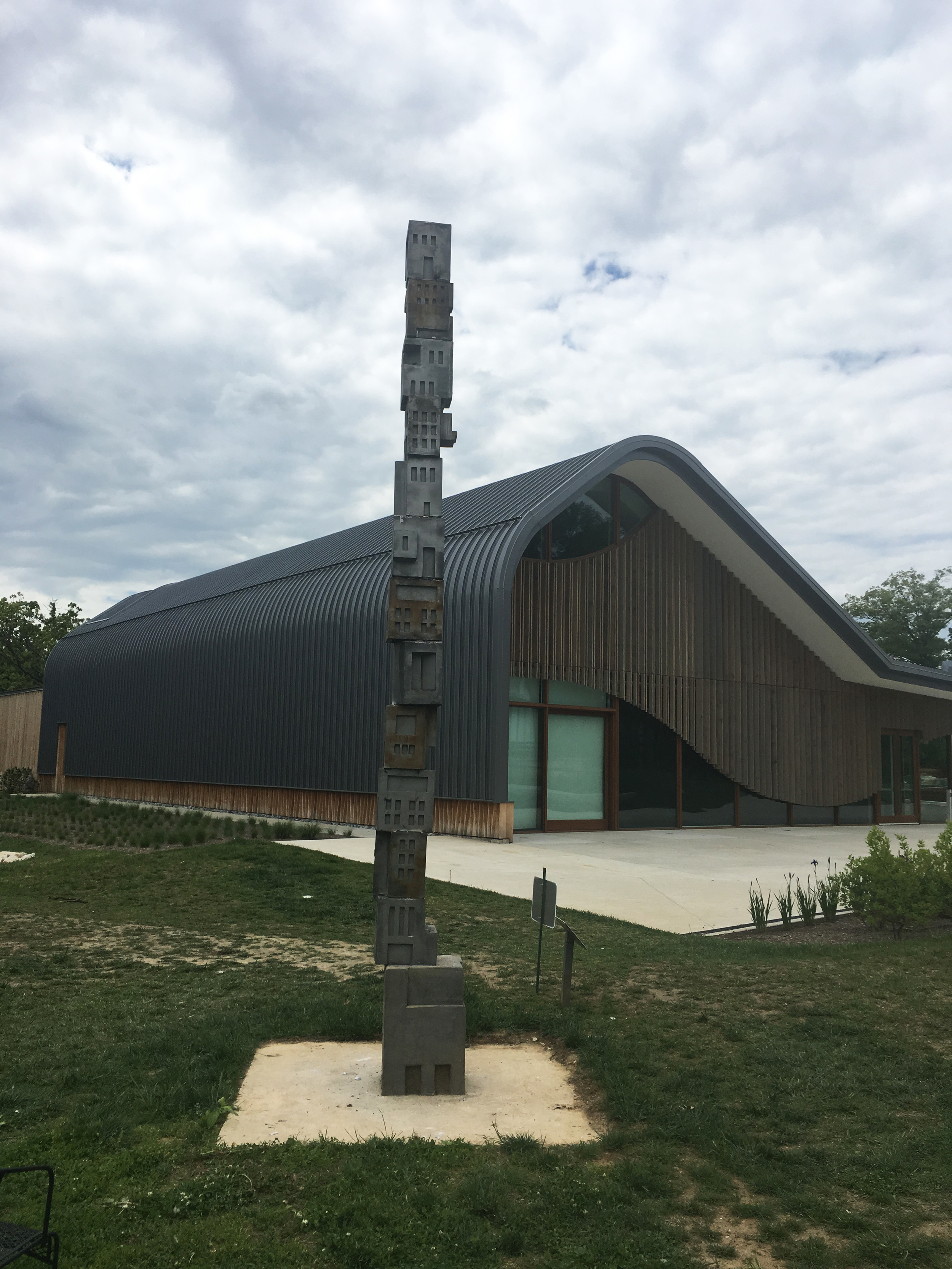
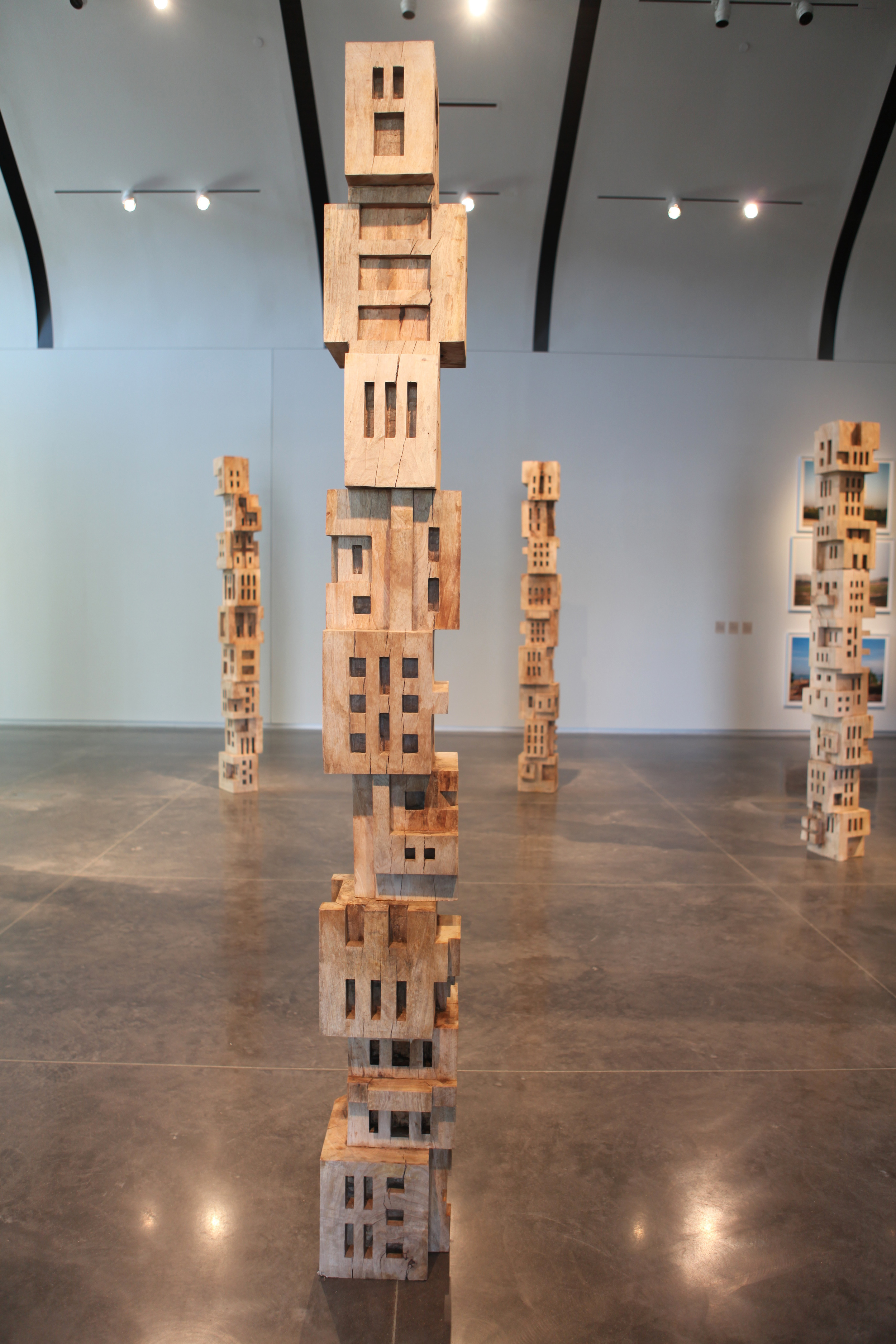
Responding to the Park’s invitation about two years ago, Scaria scheduled a series of site visits in the region of Cahokia, the largest pre-Columbian settlement north of Mexico. Inspired by the local landscape and the relics of its historical past, Scaria centered the conceptual framework of his show on Cahokia’s mounds and its astronomical observatory known as Woodhenge. The exhibition’s curator Dana Turkovic elaborates on the exhibition’s pieces. According to her, each work draws on totemic themes, continuing Scaria’s inquiry regarding “time” and community collapse by cross-pollinating the disappearing architecture and symbols from New Delhi with Missouri’s regional history, using the formal organization of the historical Woodhenge.
Scaria’s indoor sculpture Woodhenge, 2016 is comprised of seven ten-foot poles in a circular arrangement, mimicking the formal shape of the circle of 44 tall wooden posts of Cahokia’s Woodhenge. The poles are made up of maquettes of disappearing Delhi domestic spaces, meticulously carved in wood and stacked on top of each other. The same is true for the monumental 16 feet high stainless steel outdoor sculpture by the same name.
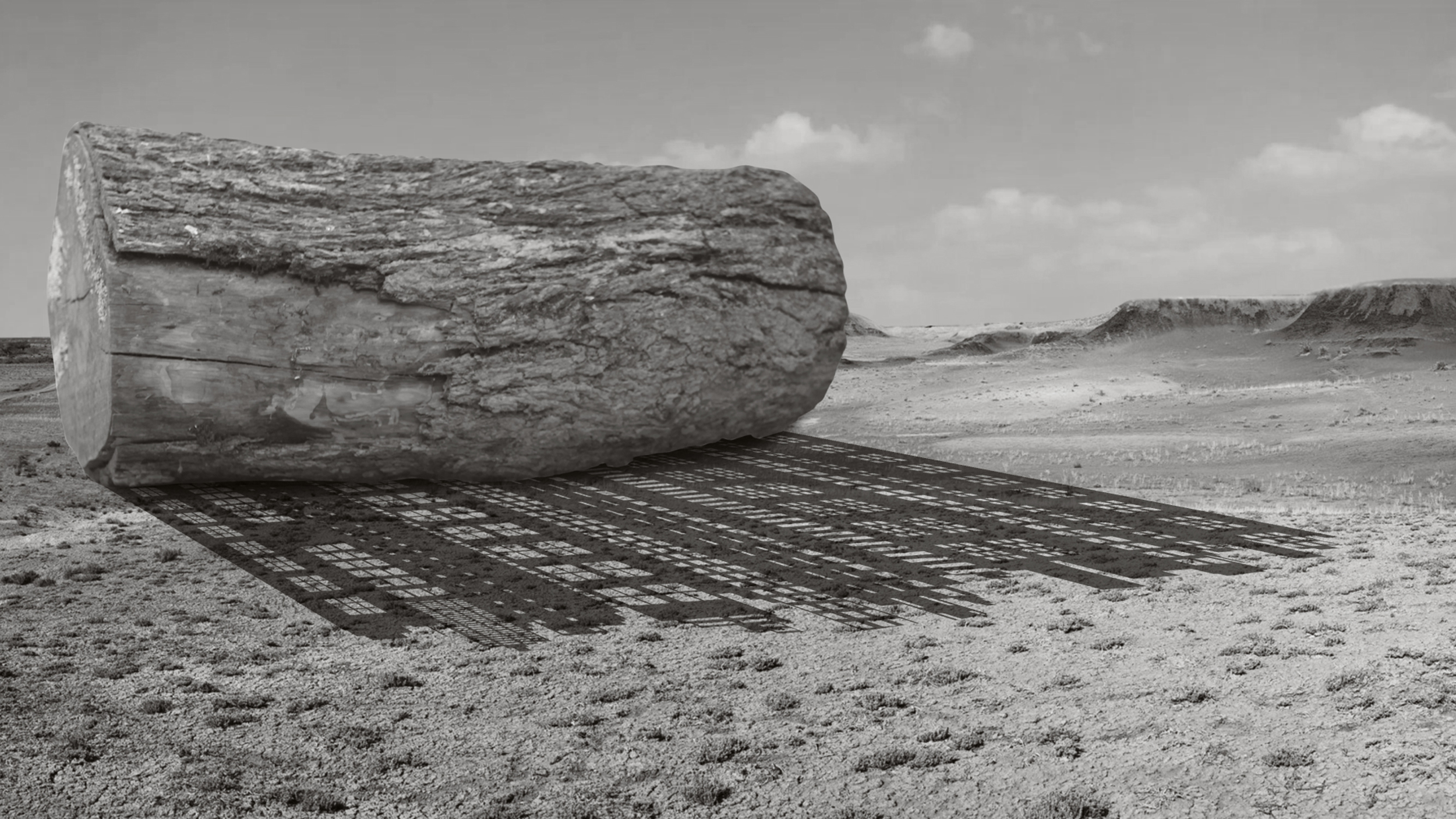
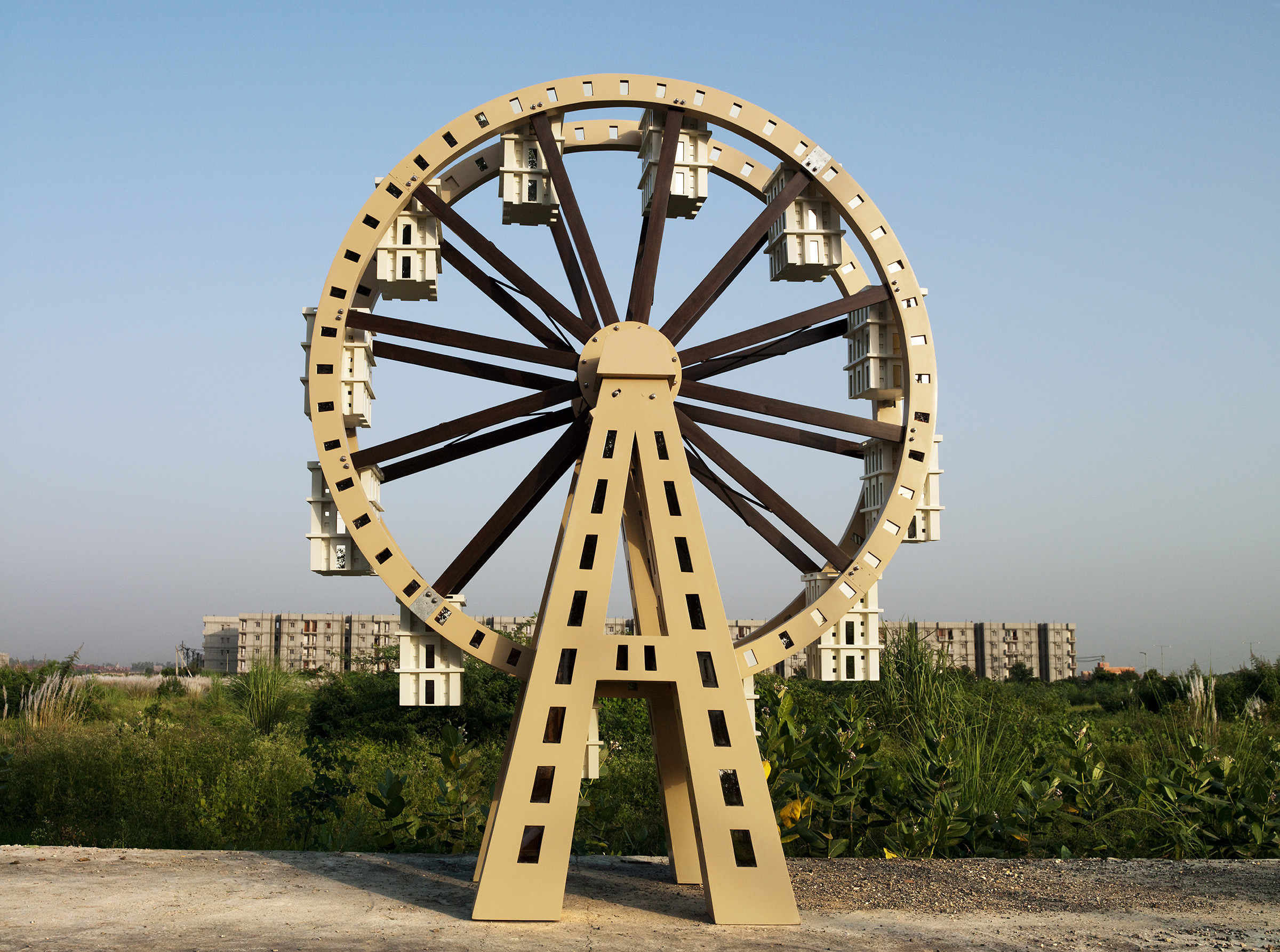
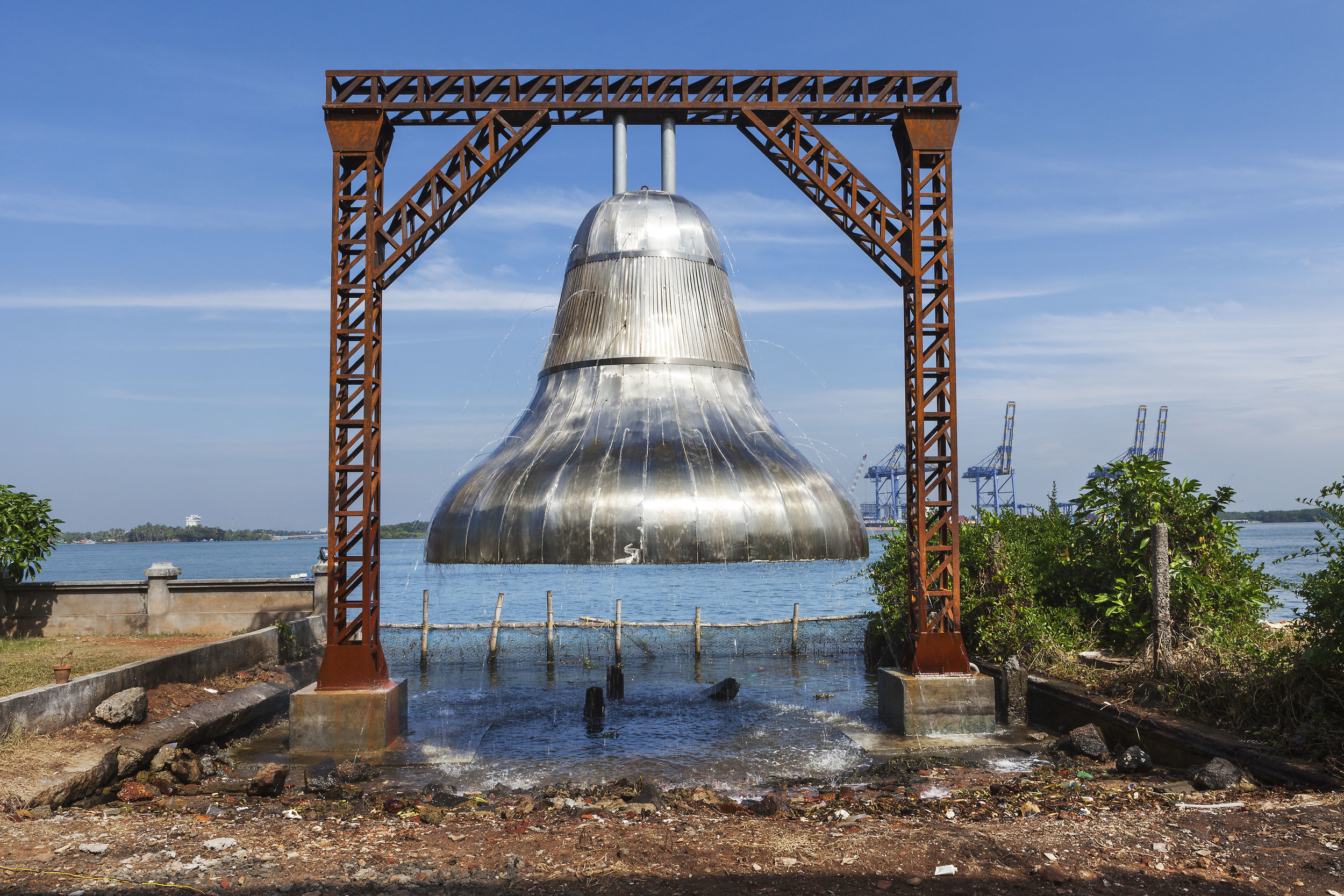
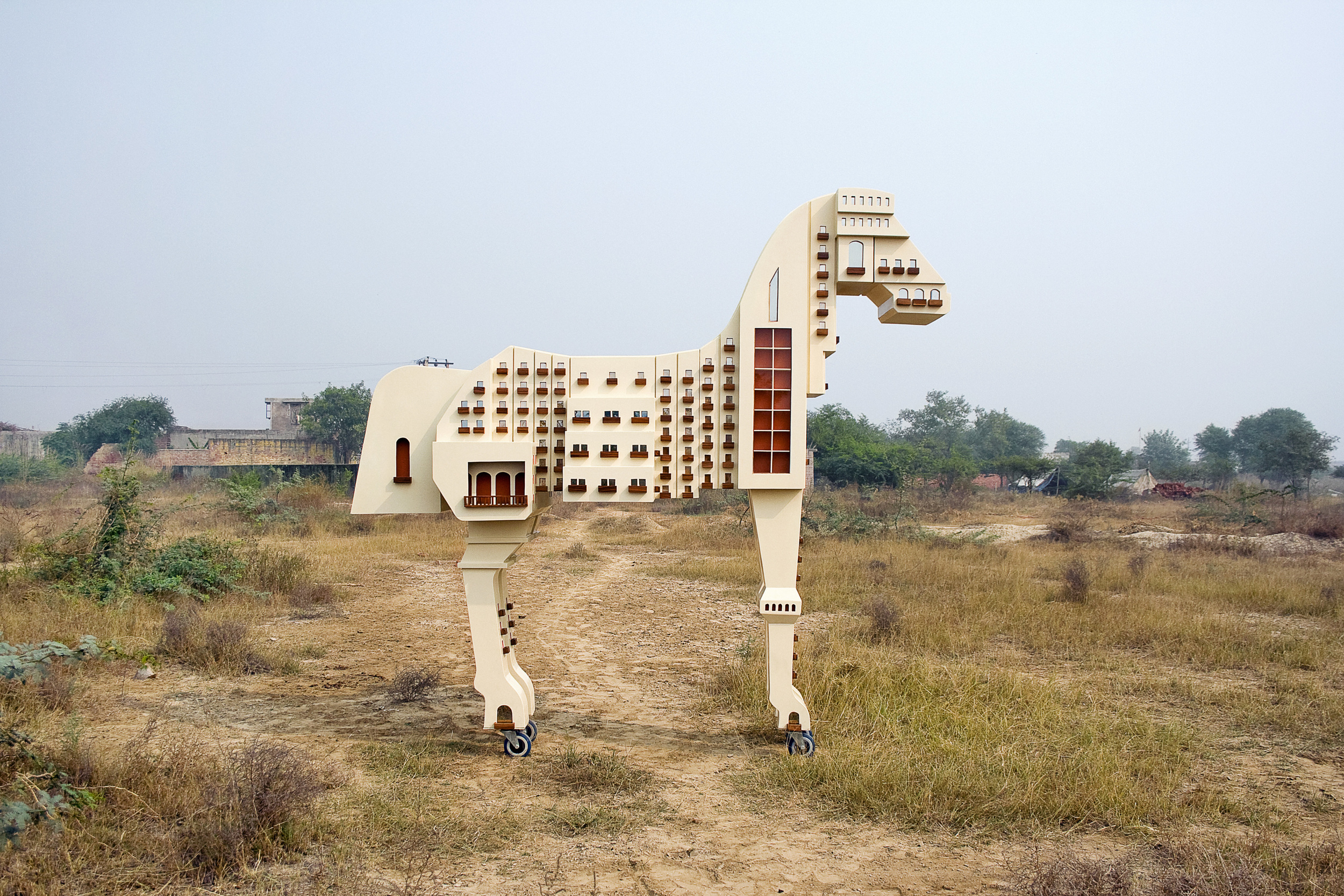
Scaria further expands on the stacking of apartments as a way of imagining the expansion of a modern city. A simple material necessity meant that three pillared sections, each measuring one foot square, had to be placed on top of each other in order to attain the desired height for the sculpture. But ironically, this process also cemented Scaria’s anxiety of an overburdened city. He explains to Art Radar that he specifically recreates architectures that are devoid of humans as a way to inform our understanding of the rampant drive to build more inhabitable dwelling spaces.
Shadow of the Ancestors and Expanded (both 2015) are animation videos produced for a body of work inspired by the tale of Noah’s Ark. Nestled between apocalyptic doom and the fight for salvation, the videos continue Scaria’s dialogue on habitation. In the former, a decaying log in a grainy deserted landscape is consumed by its shadowy cityscape, while the latter is a visual time-line of archetypal housing announced on a moving scroll. The linear motion in the videos seals their fate in urban desolation.
The third video Panic City (2006) observes the rhythmic rise and fall of a city, played to a classical symphony that ridicules the pulse of alleged urban progress.
The exhibition concludes with four photographs – stills from sculptural performances that document prior monumental work. Wheel (2009) takes the form of a giant ferrous wheel mocking the urban middle class, desirous of modern living, but contained in small matchbox sized apartments. In the same strain of thought is Someone Left a Horse on the Shore(2009). This work depicts a (Trojan) horse, one that is made of city structures, yet symbolises deceit.
Chronicles of the Shores Foretold (2014) is part of a photo series documenting the performance that is the fabrication and installation of a large-scale public work made for the Kochi Biennale in 2014 signifying the passage of time and experience of religion in the coastal region. Puzzled yet Undaunted (2010) depicts the apartment structures on top of a canon’s barrel, rendering the ammunition useless. All three mobile sculptures tell of displaced desires and peoples, of migration and homelessness and of our restless times.
In terms of the layout of the exhibition, Turkovic reveals to Art Radar,
“We wanted to create an experience that was still sculptural and played on the motifs in Scaria’s work so, we built support structures that housed the TV monitors for Scaria’s films. We (at Laumeier) imagined the exhibition as a reflection of his interest in architecture. The four photographs and the three films are not only important conceptual elements, but they also demonstrate Scaria’s way of working in the public realm. The catalog design was special too. We worked with a local design firm called Paradowski Creative. The designer really captured Scaria’s ideas by creating something that physically demonstrated a built environment or architecture.”
On reception of the exhibition and its content:
“the audience seems pleased to see the Woodhenge work since St. Louisans like to see the history of their landscape reflected in the art at Laumeier. Especially, through the eyes of someone who isn’t from here. I think people also appreciate the process of the artist coming to St. Louis and visiting the historical sites, and ultimately seeing and how Scaria related his view and experience here to what he sees on a daily basis in India.”

